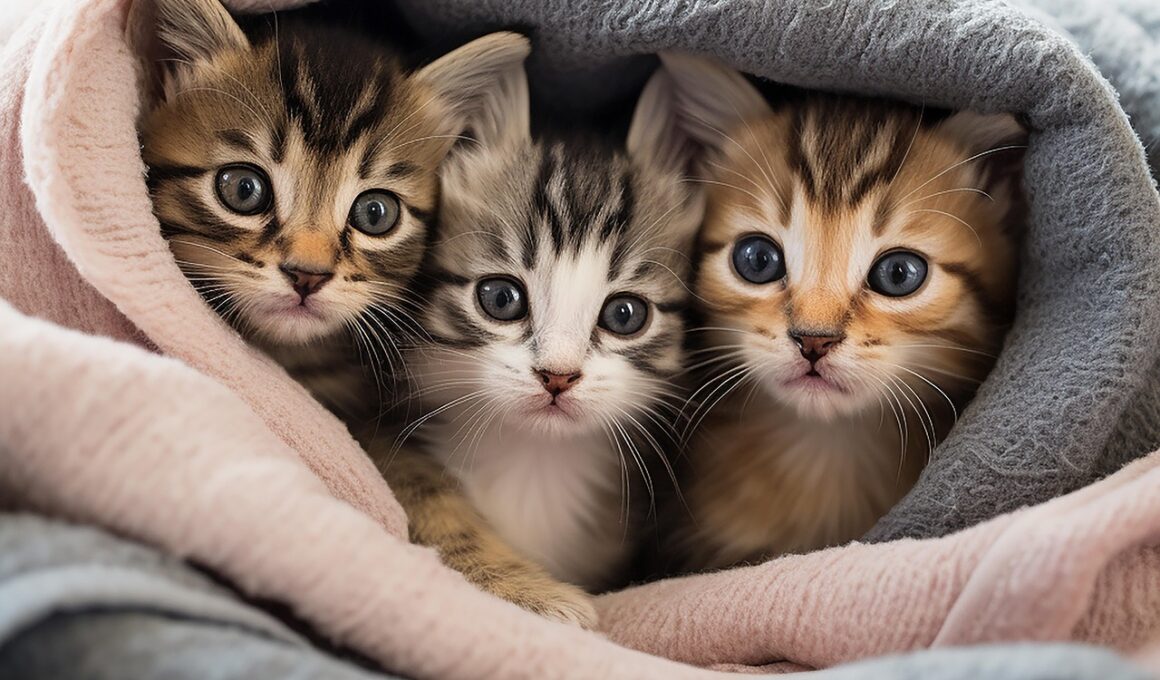Avoiding Negative Associations: Socialization Mistakes to Watch For
Socializing your cat is essential for their happiness and adaptability. However, there are common mistakes many cat owners make that can create negative associations. One significant error involves overwhelming your cat with too much stimuli at once. Cats, having a sensitive temperament, may become distressed when exposed to unfamiliar people and environments too quickly. Instead of a positive outing, this chaos can lead to fear and anxiety. Slow and controlled introductions to new experiences and people will yield better outcomes. Additionally, when introducing new pets, avoid using forceful interactions. Forcing a cat to interact can prompt defensive behaviors. Instead, allow your cat to set the pace and engage when they feel comfortable. Patience is key, alongside gradual socialization efforts. Another common mistake is neglecting to reward good behavior. Positive reinforcement can be highly effective. Offer treats or affection when your cat exhibits calm behavior around others. Failing to reward can lead your cat to believe that social situations are undesirable, reinforcing fear rather than companionship.
Another critical socialization mistake is underestimating your cat’s preferred social environment. While some cats are more extroverted, others are naturally reserved. Failing to recognize this can lead to frustration for both the cat and the owner. Instead of pushing them into socializing, try observing your cat’s behavior and adjust accordingly. If your cat seeks solitude, respect that. It is better to create a balanced environment where the cat can safely explore when feeling confident rather than forcing social experiences. Additionally, invasion of personal space can breed resentment. Cats appreciate their boundaries; forcing contact can lead to aggression. Encourage interaction through play or offering toys instead. These activities build trust gradually and can facilitate a stronger bond over time. Another mistake is neglecting to read your cat’s body language. Cats often communicate their feelings through posture, tail movements, and vocalizations. Ignoring these signals can result in accidental harm or stress for your pet. Look for signs of annoyance or discomfort during social interactions, and take breaks or redirect when necessary. This respect for their comfort level plays a crucial role in making socialization a positive experience.
The Importance of Gradual Exposure
Gradual exposure is vital in your cat’s socialization journey to prevent overwhelming reactions. Spontaneous introductions to loud environments or large gatherings can backfire spectacularly, leaving them scared and aloof. Start small, perhaps with just one new person at a time. This method allows your cat to explore at a manageable pace without feeling overcrowded. Create positive experiences by using treats or toys during introductions. Associating new people or situations with rewards can lead to increased confidence and curiosity over time. Ensure that you always monitor your cat’s behavior closely and adjust the exposure level accordingly. Too much too soon can lead to setbacks, as each cat requires a unique approach to socialization. Furthermore, remember to avoid using punishment as a response to fearful behavior. Punishing a scared cat can lead to trust issues, causing them to associate you with fear instead of safety. Instead of scolding, allow them to retreat when they want to, ensuring they feel secure in their home environment. Patience and thoughtfulness in these steps will cultivate trust, allowing for healthier social interactions in the long run.
Consistently managing introductions to new environments is essential. Don’t forget to introduce your cat gradually to different rooms in your home, as well as outdoor spaces. Cats are creatures of habit; sudden changes can make them apprehensive. Start by letting them explore a new room with dim lighting and limited people. Maintain a calm demeanor, as pets often pick up on their owners’ stress levels. A relaxed owner equates to a relaxed cat, leading to eventual comfort in new settings. Particularly in multi-cat households, introducing new cats must also follow a gradual process. Use separation methods initially, allowing them to become accustomed to each other’s scent before face-to-face meetings. Understanding this gradual exposure strategy will reduce territorial behavior. Another mistake is failing to monitor your cat’s health. Stress can affect a cat physically and mentally. Ensure proper veterinary care, as underlying health problems may hinder their ability to socialize. Regular vet check-ups can help identify issues contributing to a cat’s behavioral difficulties. Healthy cats are more likely to be confident and open to new experiences, reducing anxiety during social interactions.
Building Confidence Through Play
Using play as a tool for socialization can yield incredible results. Engaging your cat in play can create fun experiences and improve confidence. Use interactive toys that promote movement and exploration. Cats inherently engage in hunting behaviors, and toys that mimic prey can captivate their interest while fostering bravery in new situations. When your cat engages in playful behavior, it encourages them to explore their environment comfortably. Consistency is vital when implementing play sessions, aiming for short but regular intervals throughout the day. Regular play not only builds trust but also enhances physical wellness. Leaving toys in accessible areas allows cats to pick them up and explore at their own pace. Avoid play that spurs aggressive behavior; fostering a gentle approach to playtime can nurture a loving bond. Alternatively, if play transitions into aggression, take a break and allow your cat to cool down. Redirecting aggression towards appropriate toys can prevent negative associations with play. This method enables your cat to enjoy active play while minimizing frustration. Resist the urge to engage in rough play with your hands; this can lead to undesirable behaviors later.
Astonishingly, some cat owners make the mistake of failing to involve family in socialization efforts. Engaging the entire household creates unity and empowers your cat with positive connections. Family participation allows cats to experience varied personalities and reinforces acceptance of multiple people in their lives. Encourage family members to offer treats and engage in positive interactions. This approach not only strengthens trust with each family member but also creates a solid social base for your cat. Remember, each interaction should be calm, positive, and unforced. Children, especially, should learn the importance of being gentle. Teaching proper handling and interaction techniques from an early age is essential in shaping an environment where cats feel safe. Furthermore, ensuring that every family member respects the cat’s space is vital. It’s also important to monitor gatherings with friends and family. Inform guests about your cat’s social preferences, so they engage calmly and appropriately. This knowledge prevents unwarranted invaders and overwhelming situations for your pet. Ultimately, the collaborative effort among family creates a nurturing environment that fosters smoother socialization for your cat.
The Role of Routine in Cat Socialization
A routine can significantly impact your cat’s socialization success. Cats thrive on predictability; integrating varied experiences into their daily routines can enhance familiarity and comfort levels. Start by establishing consistent times for feeding and play to give structure. Gradually introduce short interactions with new people during these times to alleviate fear. Predictability reassures cats and promotes relaxation, making new situations less daunting. Establishing a schedule can also help the cat anticipate socialization sessions, leading to a positive emotional response. As comfort increases, slowly introduce new elements to the routine, such as different environments or people. Remember that gradual changes allow cats to digest alterations without feeling overhauled. Additionally, creating a safe space in the home for your cat to retreat to when overwhelmed must be part of the routine. This sanctuary offers them the comfort of retreat when social events become too intense. Recognizing the importance of routine allows for a gradual yet balanced integration of socialization in your cat’s life. Ultimately, your patience and careful planning propel your feline companion toward healthier interactions.
Avoiding these socialization mistakes ultimately leads to a well-adjusted, confident cat. Understanding that successful socialization is a gradual journey is crucial. The benefits of maintaining an attentive and patient approach throughout this process cannot be overstated. Remember, each cat is unique, with its personality and pace. Successful socialization will not happen overnight. Share experiences with other cat owners and seek advice when needed. Utilizing local resources, such as veterinary clinics or community cat programs, can also provide additional support and knowledge. Keep asking questions, and increase your understanding of cat behavior so you can better navigate socialization challenges. Avoiding impatience and ensuring progress may take time allows for a more dynamic relationship. Always keep the focus on positive associations. Regular play, gentle introductions, and rewarding good behaviors contribute to strengthening bonds with your feline friend. Lastly, remaining flexible and prepared to adapt your approach as your cat evolves and grows ensures a robust connection. A well-socialized cat is a happy cat, leading to enriched experiences for both you and your beloved pet. Embrace the unique journey towards building a healthier, happier social life for your furry companion.


